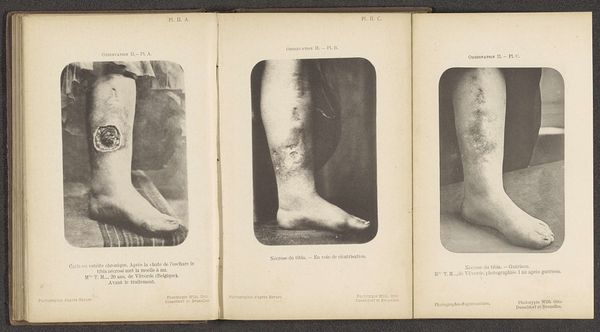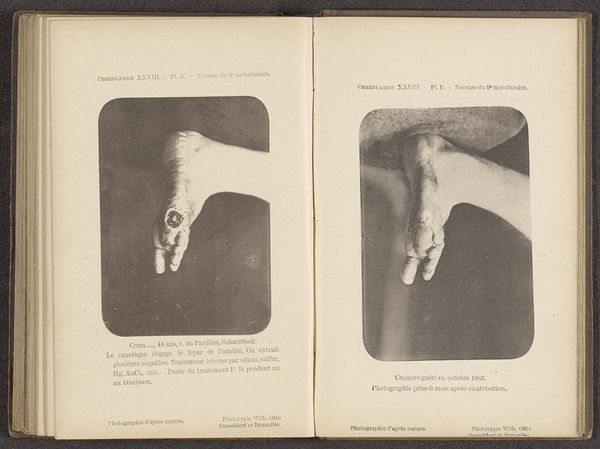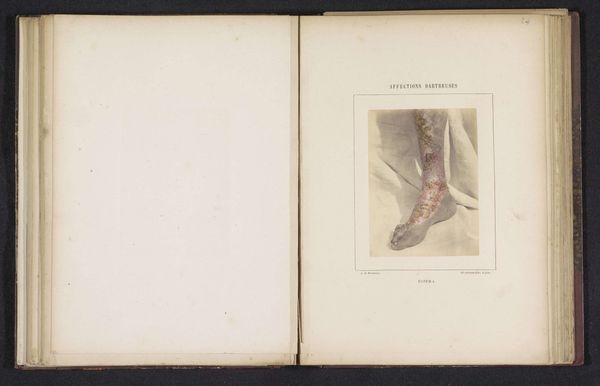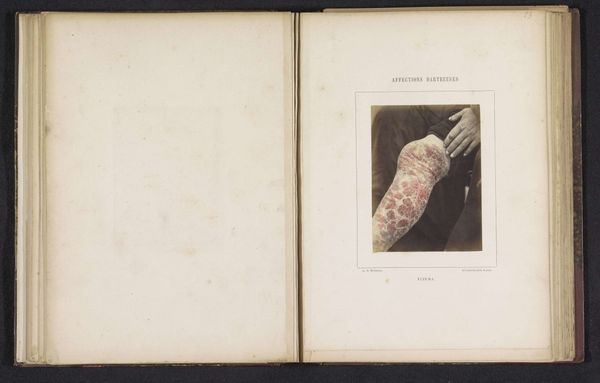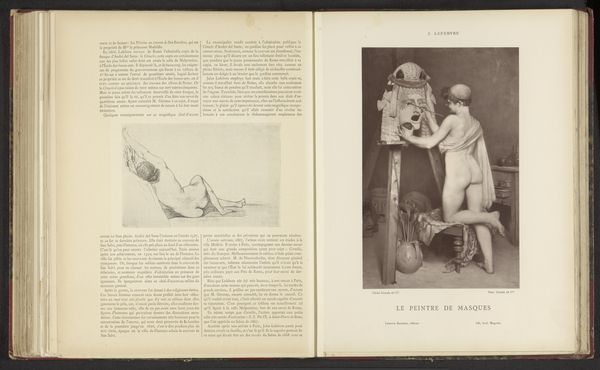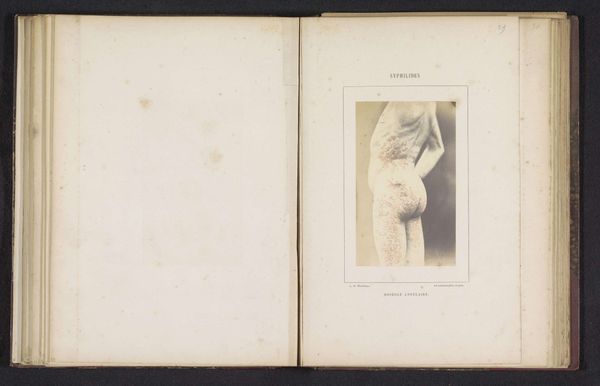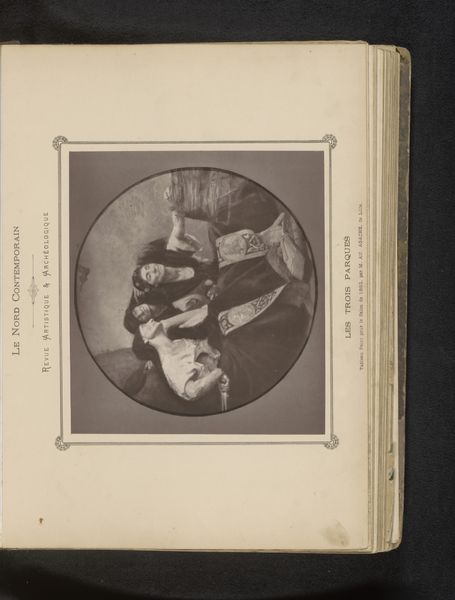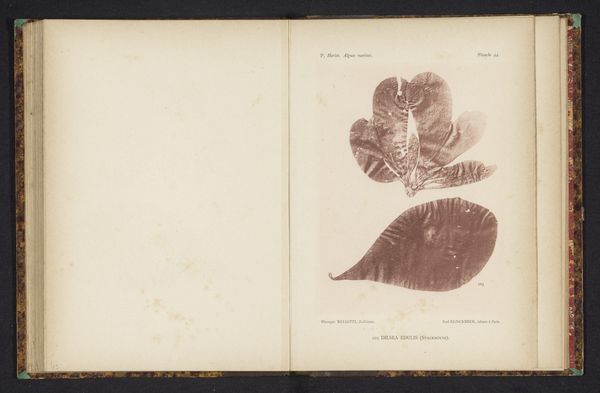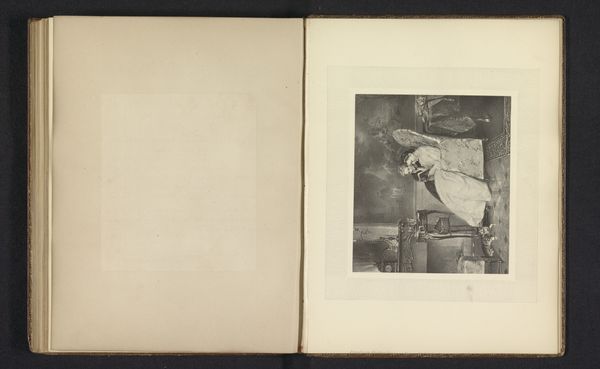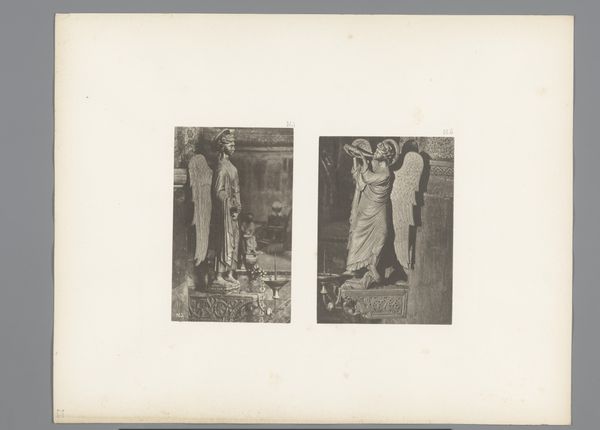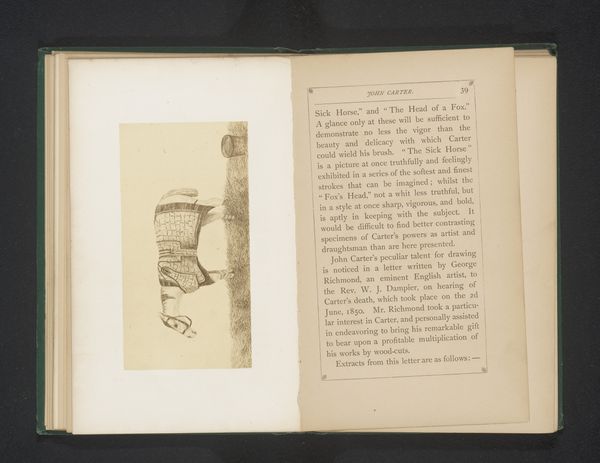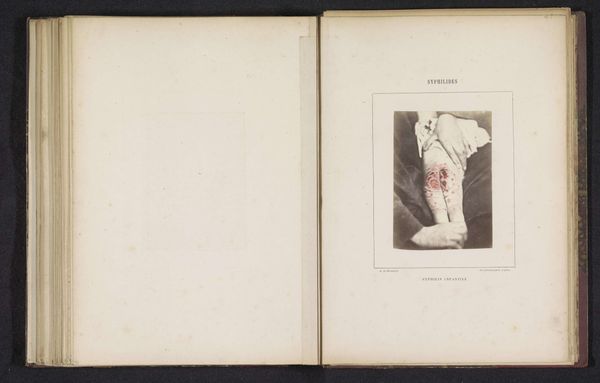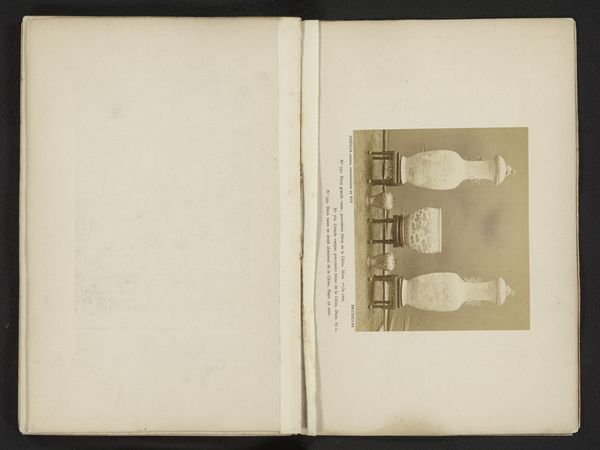
print, photography, albumen-print
#
portrait
#
narrative-art
# print
#
photography
#
coloured pencil
#
albumen-print
#
realism
Dimensions: height 135 mm, width 90 mm
Copyright: Rijks Museum: Open Domain
Curator: What strikes you first about this album page, the one bearing an image titled "Vrouw met ongeneeslijke borstkanker," dating from before 1884? Editor: Well, immediately, it's the stark, almost brutal realism. The albumen print captures a painful honesty. There's also this deep sadness emanating from it despite the almost clinical presentation of the female body, and also this other photograph that displays a severe disease of the leg of someone much older at 85. Curator: Indeed. The photograph is part of a larger project within medical discourse, we believe, a visual record that would have circulated among physicians. It really highlights the evolving role of photography in medical education and documentation. These images, unsettling as they are, speak to the power dynamics inherent in medical observation, almost objectifying the patients for a scholarly end. It really makes one consider that at this time photography's unique access and fidelity would shape understandings and perhaps also misunderstandings of women's bodies within clinical settings. Editor: And what's intriguing is the blanking out of the faces, a decision that, I feel, complicates the act of witnessing here. Perhaps, there's a concern to safeguard the individuals depicted, and if you ask me this removal creates space for symbolic interpretations to arise from this scene of anonymity. For instance, veiling is suggestive here too. One cannot simply reduce an individual's state to their symptoms: these details imply a shared social experience between sickness, religion, and suffering. Curator: I agree; this act of partial anonymization certainly shifts our gaze and sharpens our reflections upon consent, patient rights, and the general cultural tendency toward either extreme fetishization or denial of physical conditions. We are confronted with both the woman's presence and her imposed absence; this photograph, created before any real bioethical framework existed, invites speculation and critique about what might have informed this photographic choice. Editor: Ultimately, in its rawness, the print holds a mirror up to medical practices and cultural norms. It reminds us to scrutinize not only the visual language of disease but also our ways of seeing and engaging with those images, both then and now. Curator: Precisely; these images challenge us to think about the historical frameworks influencing our gaze as viewers. And it demands we confront uncomfortable truths and power structures underlying visual representations, even to this day.
Comments
No comments
Be the first to comment and join the conversation on the ultimate creative platform.
